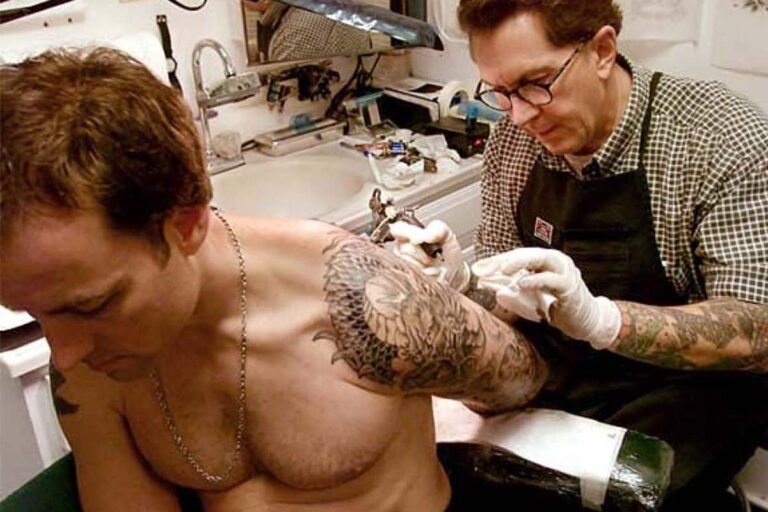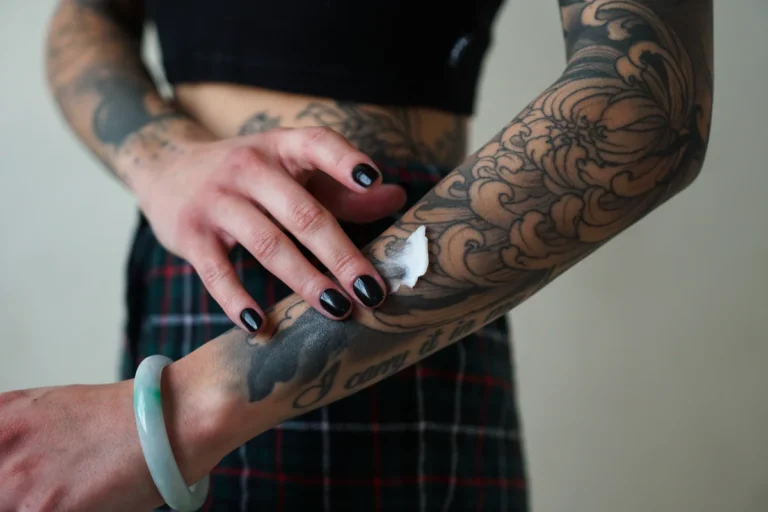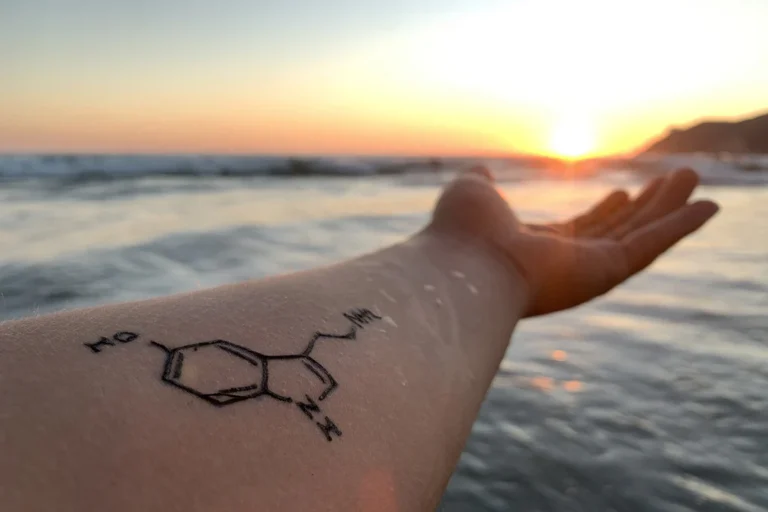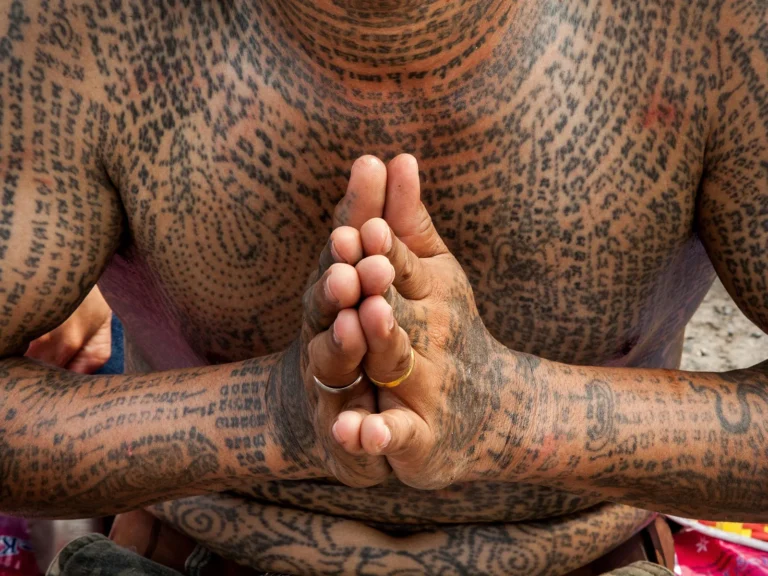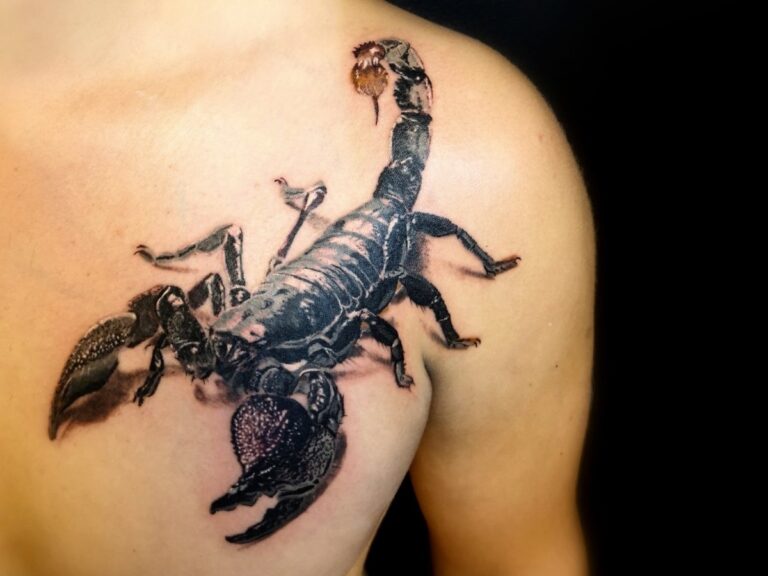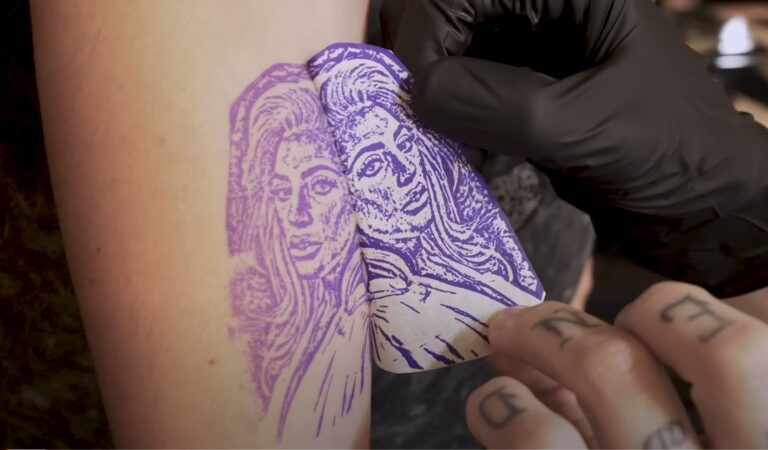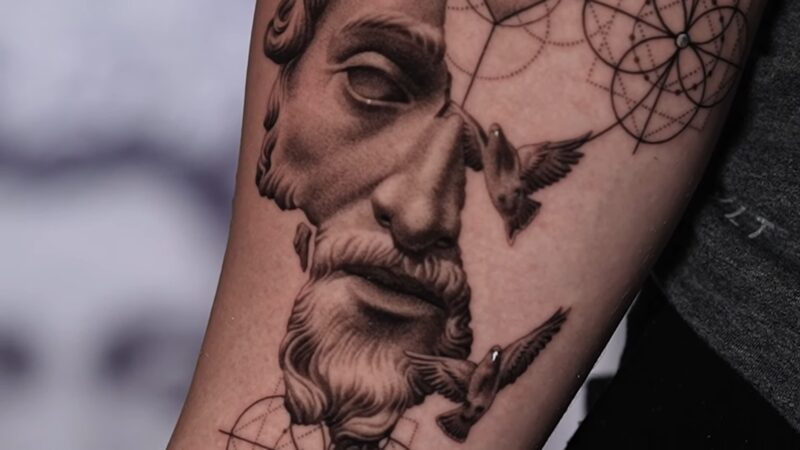Tattoos have been a form of expression for centuries, and while they are a beautiful art form, the pain associated with getting one can be a deterrent for many.
I’ve heard countless individuals talking about the pain levels they can expect during their sessions.
First of all, the pain is subjective and varies from person to person.
Factors like tattoo placement, individual pain tolerance, and even the tattoo artist’s technique can influence the pain experience.
Let us talk about it in greater detail.
Personal Pain Tolerance
Everyone’s pain threshold is different. Some might find the process merely annoying, while others might find it excruciating.
Personal experiences, such as past injuries or medical conditions, can also play a role in how one perceives pain.
Being mentally prepared can significantly influence your pain experience. Anxiety can heighten pain, so it’s essential to approach your session with a calm mindset.
Hydration, adequate sleep, and even the menstrual cycle can affect pain tolerance. It’s crucial to be in good physical condition on the day of your tattoo session.
An Indicative Chart
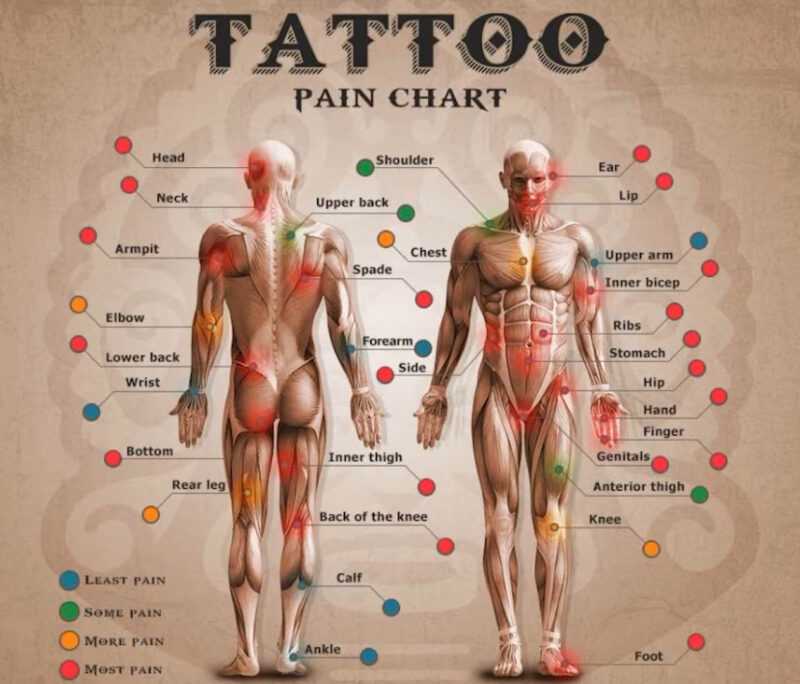
I’ve noticed that certain body parts tend to be more sensitive than others.
| Body Part | Pain Level | Description |
|---|---|---|
| High Pain Areas | ||
| Ribs | High | The ribcage is sensitive due to the thin skin covering the bones. Feels like a sharp, scratching sensation. |
| Hands and Feet | High | Many nerve endings make tattoos here particularly painful. |
| Head and Face | High | Thin skin and close bone structure intensify the pain. |
| Moderate to Low Pain Areas | ||
| Arms and Legs | Moderate to Low | Biceps, forearms, thighs, and calves generally offer a more tolerable pain experience. |
| Back | Moderate to Low | The upper back can be sensitive near the spine, but the lower back and shoulder blades are more padded. |
| Chest | Moderate | Moderate pain is experienced but can be more intense near the collarbone. |
High Pain Areas
Some areas of the body are notoriously more painful to tattoo due to the proximity of bones or the thinness of the skin.
These areas include:
Ribs
The ribcage is a sensitive area because of the thin skin covering the bones. The sensation of getting a tattoo here can be likened to a sharp, scratching feeling.
The vibrations from the tattoo machine can also add to the discomfort, making rib tattoos particularly challenging for many people.
Hands and Feet
Hands and feet contain numerous nerve endings, making tattoos in these areas particularly painful. The skin is also relatively thin, especially on the tops of the hands and feet, increasing sensitivity.
The hands and feet are often in motion and exposed to friction, which can make the healing process more uncomfortable and prolonged.
Head and Face
The skin on the face and head is very thin, and the bone structure is close to the surface, which intensifies the pain. Areas like the temples, forehead, and scalp can be especially painful due to the lack of cushioning between the skin and the bone.
The constant vibrations and the sensation of the needle can make head and face tattoos a tough experience for many.
Moderate to Low Pain Areas
Certain body parts have a thicker skin layer or more muscle padding, which can significantly reduce the sensation of pain during a tattoo session. These areas include:
Arms and Legs
The biceps and forearms generally offer a more tolerable pain experience due to the muscle mass in these areas. The outer parts of the arms are usually less painful compared to the inner areas, which can be more sensitive.
The thighs and calves have substantial muscle padding, which helps in mitigating the pain. The outer thigh and calf areas are particularly manageable, making them popular choices for larger tattoos.
Back
While the area near the spine can be sensitive, the pain is usually more manageable than on the ribs. The shoulder blades can also be somewhat sensitive, but the overall experience is generally moderate.
The lower back has more muscle and fat padding, offering relief from intense pain. This area is often preferred for larger tattoos due to the relatively tolerable pain levels and ample space for intricate designs.
Chest
For many, the chest provides a moderate pain experience. The central parts of the chest, where there is more muscle and skin, tend to be less painful.
While the central chest area is generally more tolerable, the pain can become more intense near the collarbone and sternum.
The thin skin and proximity to bone in these areas can heighten sensitivity.
Tips for Managing Pain
While it’s impossible to eliminate tattoo pain entirely, there are strategies to manage and reduce discomfort. Drawing from years of experience and feedback from clients, here are some tried-and-true methods to help you through your tattoo session.
Before the Session
Preparation is key. Ensuring you’re in the best physical and mental state can make a significant difference in your pain experience.
- Having food in your system stabilizes blood sugar levels, reducing the risk of feeling faint or nauseous during the tattoo session. A balanced meal with protein, carbohydrates, and healthy fats can provide sustained energy.
- Drinking plenty of water before your session keeps your skin hydrated and helps your body handle the stress of getting a tattoo.
- Avoid Alcohol and caffeine can thin the blood, leading to increased bleeding, which can affect the tattoo’s quality and prolong the healing process. It’s best to avoid them for at least 24 hours before your appointment.
- Being well-rested helps your body cope better with pain and stress. Ensure you get a good night’s sleep before your tattoo session.
- Choose loose, comfortable clothing that allows easy access to the tattoo area. This will help you stay relaxed and make it easier for the artist to work.
During the Session
Managing pain during the session involves both physical and mental strategies.
- Taking deep, controlled breaths can help relax your body and mind. Focus on breathing deeply in through your nose and out through your mouth to maintain a steady rhythm.
- Engaging in activities that divert your attention from the pain can be very effective. Listening to music, watching a show or movie on your device, or chatting with your tattoo artist can keep your mind occupied.
- Try to stay as relaxed as possible. Tensing up can make the pain feel more intense. Remember that the pain is temporary and the outcome is worth it.
- Don’t hesitate to ask for short breaks if the pain becomes overwhelming. Taking a moment to stretch and relax can help you reset and manage discomfort better.
- Some clients find relief using topical numbing creams. If you’re interested, discuss this with your tattoo artist beforehand to ensure it’s appropriate for your session.
After the Session
Proper aftercare can also impact your overall experience and comfort.
- Adhering to the aftercare guidelines provided by your tattoo artist helps ensure proper healing and reduces discomfort and complications.
- Continue to drink plenty of water and eat well-balanced meals to support your body’s healing process.
- Give your body time to heal by getting plenty of rest and avoiding strenuous activities that might stress the tattooed area.
Summary
Tattoos are a beautiful journey of self-expression, artistry, and resilience. While the pain is a part of the process, it’s a fleeting moment compared to the lifetime of memories and stories your tattoo will hold.
Equip yourself with knowledge, trust in your artist, and embrace every part of the experience. After all, every inked story is worth the pain.

